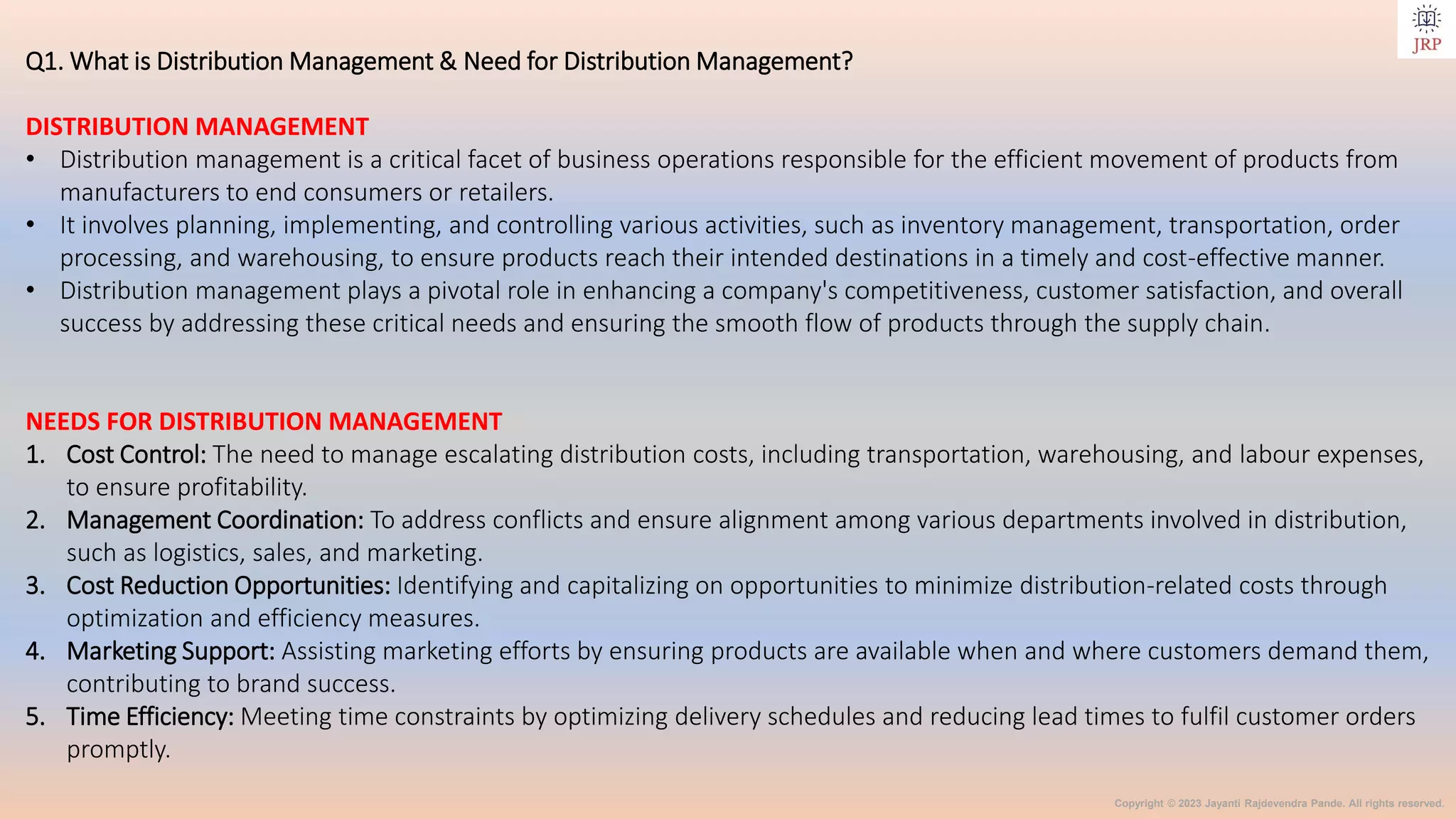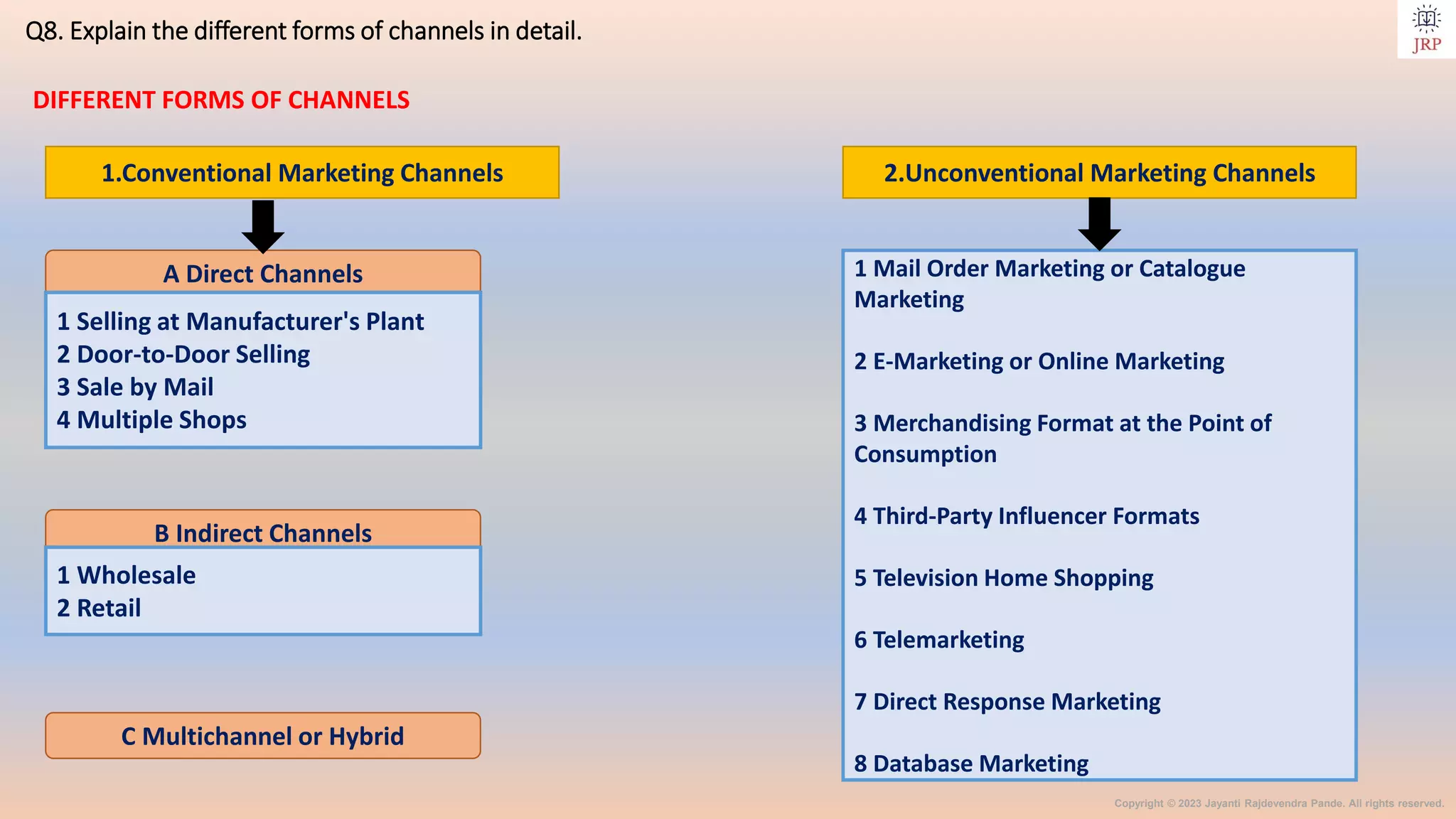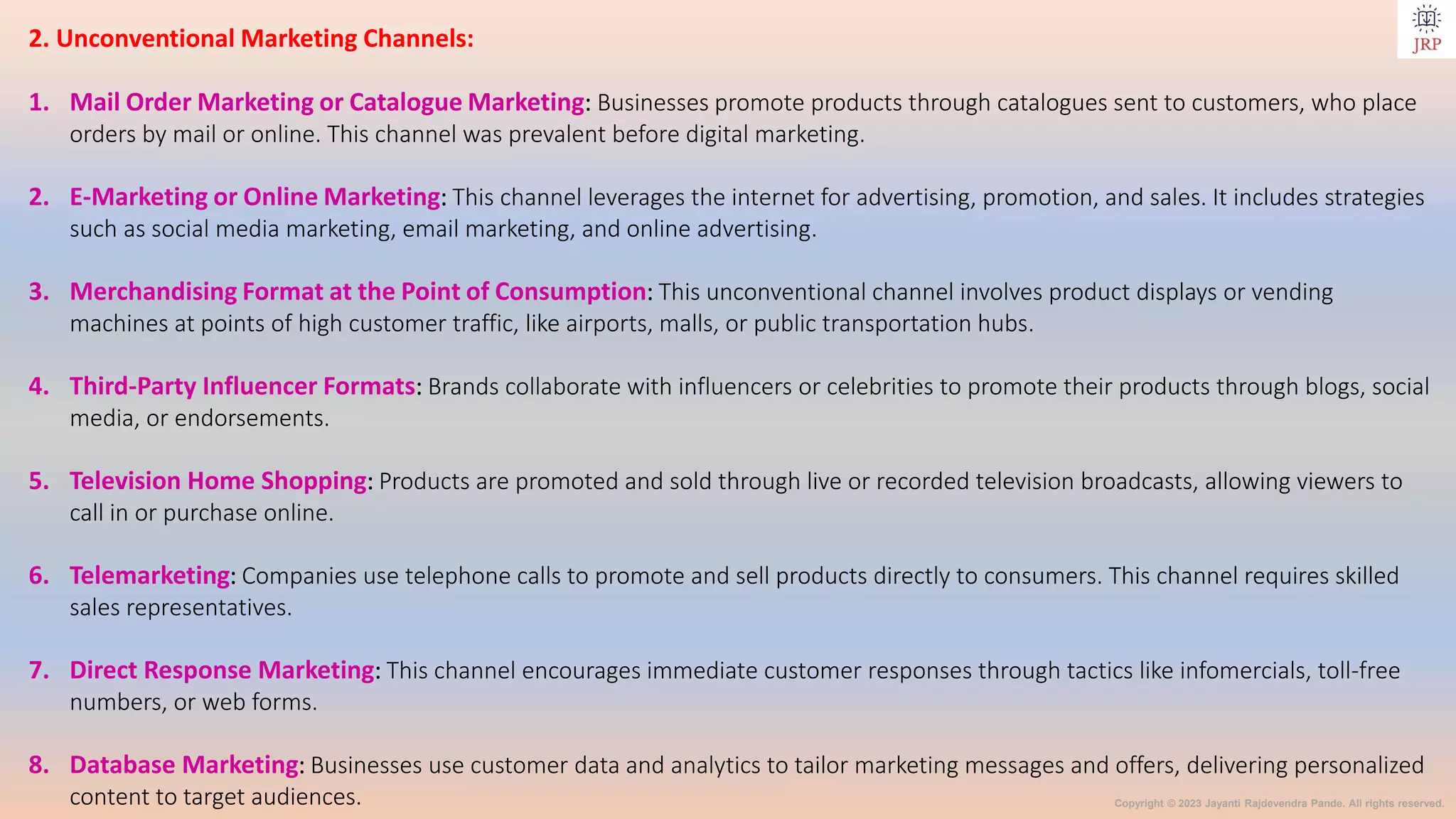The document discusses distribution management as a crucial aspect of business operations that ensures the efficient movement of products from manufacturers to consumers. It highlights the needs for distribution management, such as cost control and customer satisfaction, and outlines methods to add value in distribution, including time and place utility. Additionally, it covers physical distribution decisions, patterns of physical distribution, and the nature and function of marketing channels, emphasizing the importance of strategic channel selection for optimizing market reach and customer experience.

















